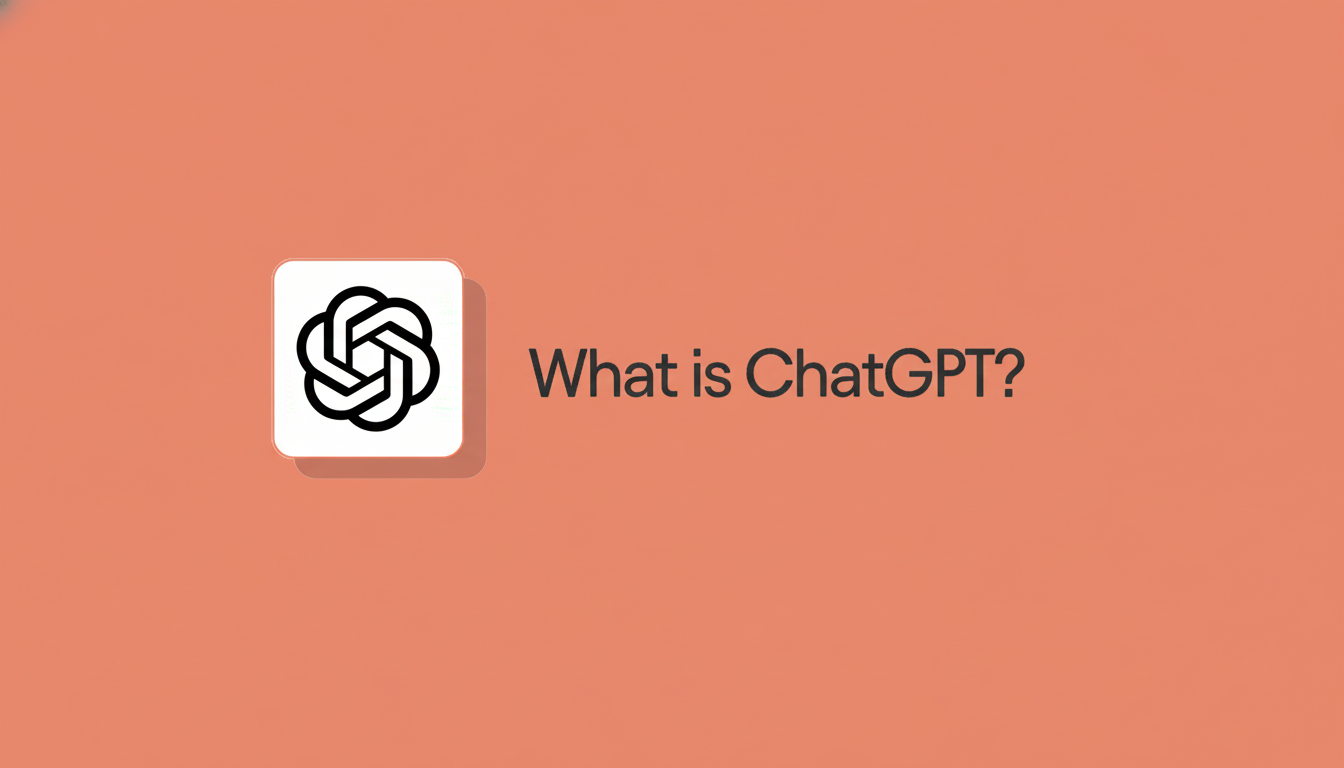Jasper Marketing
August 1, 2025
What Is ChatGPT? Horizontal vs. Purpose-Built AI
What is ChatGPT and how does it differ from purpose-built AI? Learn the key distinctions for enterprise marketers focused on security, brand voice, and ROI.

Artificial intelligence has moved from a future-state concept to a daily reality for marketing teams. Central to this shift is ChatGPT, a tool that has fundamentally changed how we think about content and creativity. But for enterprise leaders, the conversation goes beyond what ChatGPT is. The more important question is how to use it strategically and securely.
Understanding the difference between general-purpose AI like ChatGPT and purpose-built AI platforms is essential for making smart technology investments. One is a powerful, horizontal tool for exploration. The other is a strategic tool designed specifically for enterprise-grade marketing.
What is ChatGPT?
ChatGPT is a large language model (LLM) developed by OpenAI. It functions as a conversational AI, capable of understanding and generating human-like text based on the prompts it receives. Trained on a vast dataset of internet text, it can draft emails, write code, answer questions, and brainstorm ideas on nearly any topic, making it a highly versatile tool for a wide range of tasks.
For marketers, ChatGPT can be an excellent starting point for ideation or creating first drafts. Its power lies in its breadth of knowledge and its flexibility to tackle almost any request. However, this generalist nature also creates limitations for enterprises that require brand consistency, data security, and scalable workflows.
Horizontal AI vs. purpose-built AI
Think of a horizontal AI tool like ChatGPT as a multi-purpose utility knife. It can perform many functions reasonably well, from writing a social media post to outlining a presentation. It is designed for mass-market use and isn't specialized for any single business function.
A purpose-built AI, on the other hand, is like a surgeon’s scalpel. It is designed with a specific, complex job in mind. For enterprise marketers, this means an AI platform engineered to handle the core challenges of creating on-brand, compliant, and performant content at scale.
While horizontal tools access broad public data, purpose-built platforms for marketing integrate deeply into your business. They connect to your specific brand voice guidelines, product catalogs, and campaign data. This allows the AI to create content that is not just well-written, but also strategically aligned with your business goals.
What about image generation? Horizontal image generators can quickly produce on-brief visuals, but they struggle with brand fidelity and product accuracy at scale. Purpose-built image generation ties directly into your brand system—colors, fonts, product SKUs, even compliance rules—so teams can generate variations confidently without hours of manual edits. This approach materially narrows the “accuracy gap” for enterprise use cases, particularly when product truth and legal review matter.
Why purpose-built AI is critical for enterprise marketing
For an enterprise, content is more than just words; it’s a direct reflection of the brand. Every asset must be consistent, compliant, and secure. This is where the advantages of a purpose-built AI become clear.
1. Brand governance and consistency
A purpose-built AI ensures every piece of content, from ad copy to a blog post, adheres to your specific brand voice, style, and messaging. It moves beyond generic outputs to produce work that is recognizably yours, maintaining brand integrity across all channels. Purpose-built image generation enforces brand and product accuracy (logos, palettes, packaging) and connects to approvals, so creative is both fast and correct.
2. Data security and compliance
Enterprise marketers handle sensitive information and must operate within strict regulatory frameworks like GDPR. Purpose-built AI platforms offer enterprise-grade security features, such as SOC 2 compliance, ensuring your data remains protected. Unlike horizontal tools that may use your inputs for training, these platforms provide a secure environment for your proprietary information.
3. Integrated workflows and collaboration
Modern marketing is a team sport. Purpose-built AI platforms are designed with collaboration in mind, featuring built-in workflows for creation, review, and approval. This streamlines the entire content lifecycle, connecting your team within a single, efficient system.
4. Strategic insights and performance
A purpose-built AI doesn’t just create content; it helps you build a holistic AI content strategy at scale. By analyzing performance data and audience engagement, it provides insights to optimize your efforts and improve ROI. This strategic partnership turns your content engine into a driver of business growth. As marketers increasingly focus on AEO and GEO, having an AI that understands your strategic goals is crucial for creating content that ranks in AI-driven search.
Frequently asked questions
Is ChatGPT secure for enterprise use?
While ChatGPT Enterprise offers more security than the free version, purpose-built AI platforms designed for enterprise use typically provide robust, customizable security protocols, including SOC 2 compliance and advanced data privacy controls.
Can ChatGPT and purpose-built AI be used together?
Yes. Many teams use ChatGPT for initial brainstorming or general research. They then move to a purpose-built AI platform to refine that content with their specific brand voice, check for compliance, and manage it through collaborative workflows.
How does purpose-built AI improve marketing ROI?
By ensuring brand consistency, accelerating content production, and providing data-driven insights, purpose-built AI helps teams create more effective campaigns faster. This efficiency and improved performance lead directly to a higher return on investment.
Can purpose-built AI improve image accuracy and speed?
Yes. When image generation is grounded in your brand system and product data, it reduces off-brand outputs and rework, accelerating turnarounds while improving legal and brand compliance.
While horizontal AI tools have opened the door, purpose-built AI provides the secure, scalable, and strategic solution that enterprise marketing leaders need to walk through it with confidence.
Learn more about how to create an effective, AI-powered content strategy by exploring our guide to building a scalable content pipeline.
More of the latest & greatest

Gemini 3 Pro in 24 Hours: Inside Jasper’s LLM-Optimized Architecture
How does Jasper validate new AI models like Gemini 3 Pro in under 24 hours? Inside our rigorous 3-step testing process for enterprise marketing.
December 4, 2025
|
Nick Hough

3 Predictions for AI in Marketing in 2026
In 2026, AI will rewire teams, streamline tooling, and turn content into a competitive engine.
December 2, 2025
|
Loreal Lynch
.png)
Highlights from Jasper Assembly: Scaling Content with Confidence
Discover key insights from Jasper Assembly 2025. Leaders from Sanofi, NetApp, U.S. Bank, and BCG shared AI marketing strategies for scaling content and driving impact.
November 19, 2025
|
Loreal Lynch













